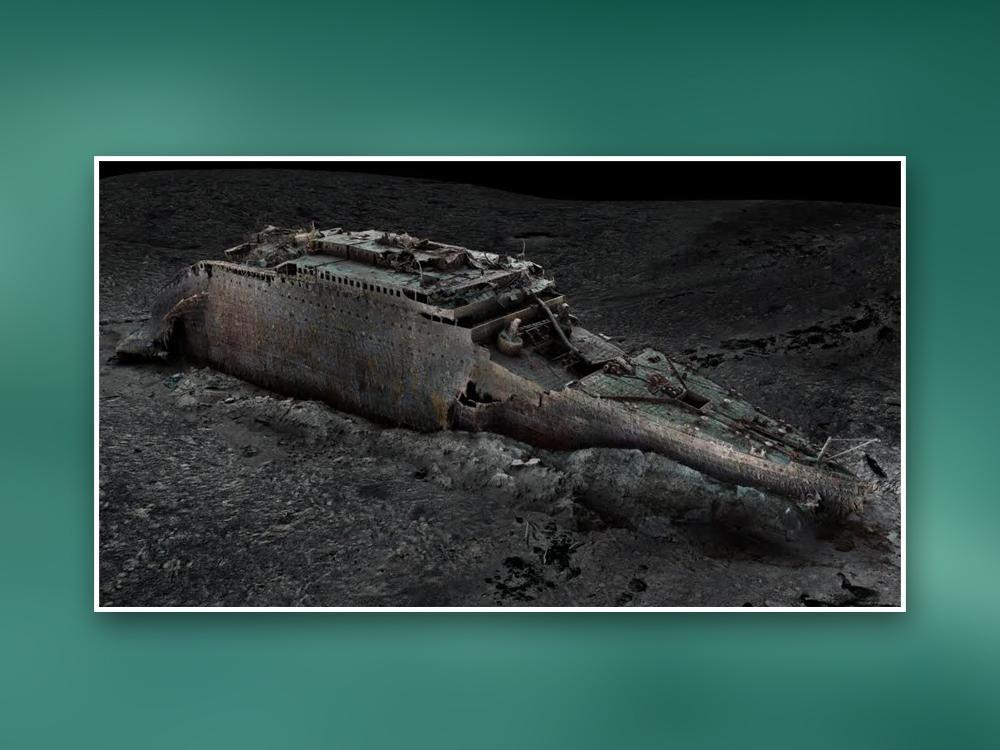3D scan of Titanic wreck supports eyewitness accounts

It's been 113 years since the sinking of the Titanic and yet more and more details about the sinking of one of the most recognizable ships in history is still coming out.
The BBC reports that a 3D scan of the Titanic's wreckage shows that the ship's boilers were concave at the time when they plunged into the water, which means that they were still functioning as the ship sank. The boilers were used to power the ship's electrical system and other functions and this new evidence that they were still working at the time of the sinking corroborates eyewitness accounts that ship engineers were still shoveling coal into the ship's furnaces to keep the lights on as passengers boarded lifeboats.
The 3D scan and its findings are featured in a new documentary called Titanic: The Digital Resurrection, which is streaming in Disney+ in the United States. The 3D scan was made using underwater robots and is made up of about 700,000 images of the wreckage taken from every angle.
Aside from the concave boilers, the 3D scan also showed that there were six small tears in the ship's hull caused by its collision with the iceberg. While the holes were “the size of a piece of paper,” its length was what eventually floods and sinks the Titanic.
"The difference between Titanic sinking and not sinking are down to the fine margins of holes about the size of a piece of paper," said associate lecturer in naval architecture, Simon Benson, while speaking to the BBC. "But the problem is that those small holes are across a long length of the ship, so the flood water comes in slowly but surely into all of those holes, and then eventually the compartments are flooded over the top and the Titanic sinks."
This is just the latest discovery made about the Titanic. Back in September last year, an expedition by RMS Titanic Inc. ended with 2 million high-resolution photos of the site that include photos of the “Diana of Versailles” statue, which was last seen in 1986. The Titanic's iconic bow's forecastle deck - the one where Jack and Rose from the movie Titanic memorably held each other - was also photographed, showing that it has already fallen.
The Titanic hasn't just fueled countless documentaries, it has also had a huge effect on the auction scene. Back in November last year, a private collector from the United States paid £1.56 million or P117,204,328 based on current exchange rates to acquire an 18-carat Tiffany & Co. timepiece owned by Sir Arthur Rostron, the captain of the passenger ship RMS Carpathia that saved more than 700 passengers of the Titanic. The watch was gifted to him by those survivors.
This was just one of the items from the Titanic auctioned by Henry Aldridge & Son Ltd. Earlier that month, the company announced they would be auctioning off a first-class menu, a lifeboat blanket, and several items.
The menu auctioned was from the first class section of the ship and is dated April 11, three days before the Titanic sank. Some of the items that can still be read on the menu include entrées of “Salmon Hollandaise” and "Squab à la Godard" and dessert options like "Apricots Bordaloue" and “Victoria Pudding.” No other menus for April 11 exist anywhere, as confirmed by the auction house with museum and memorabilia collectors.
The menu was expected to sell anywhere from £50,000 to £70,000 (P3,755,947 to P5,258,117 based on current exchange rates). A blanket used by one of the survivors was expected to sell for £100,000 or P7,511,597 based on current exchange rates.
RELATED GALLERY: Expensive items sold at auctions







